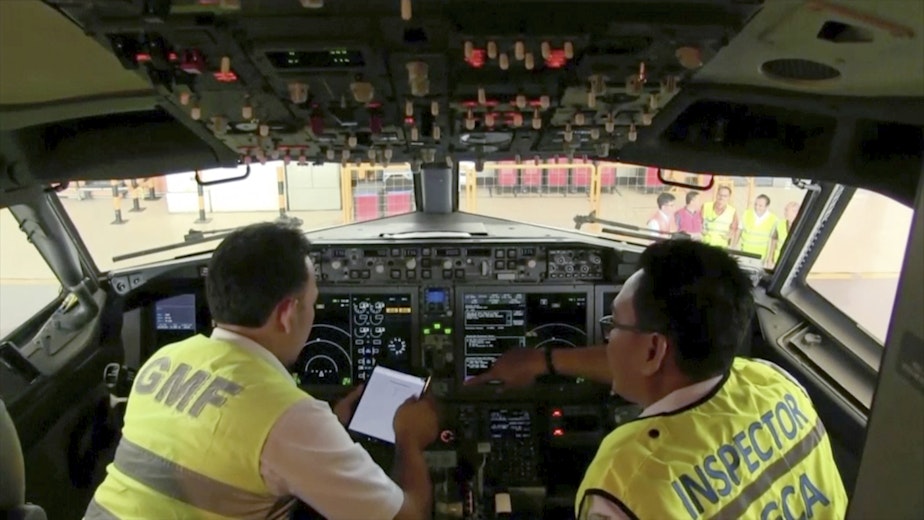Old 737 switch could have saved Ethiopian flight, engineer says

A former Boeing engineer says the company changed the wiring of two cutoff switches inside the MAX — a decision, he says, that took away an option from the pilots fighting to save the Ethiopian flight that crashed and killed all 157 people on board.
The design of the 737 MAX has been under scrutiny since two crashes that killed 346 people. Attention has focused on the MCAS automated system that pushed the plane’s nose down, the sensors it relied upon to make those decisions and whether there were indicators to tell pilots something was wrong.
Former Boeing engineer Peter Lemme says the MAX's wiring of two cutoff switches eliminated an escape route for pilots trying to get out of trouble.
Before, on previous models of the 737, the two switches worked separately. One could turn off automated systems and was labelled “Autopilot.” The other could cut out the motor running the stabilizer that controls the plane's flying angle. It was labeled “Main Elect."
On the MAX, the functions were combined and the two switches were physically made inseparable. It would be all or none. So when the MCAS automated system started to push the Ethiopian plane's nose down, the pilots had to turn both switches off.
Without access to the electrical motor, the pilots tried to hand-crank the stabilizer into position but did not succeed.
Lemme's writing about the 737 MAX has so interested the Justice Department that he’s been called to Washington, D.C. to answer questions in a criminal investigation into the Boeing crashes. He says if Boeing hadn’t changed the switches the pilots on the Ethiopian plane would have had another chance to save the flight.
Other pilots have encountered problems with MCAS and still safely flown their planes. Lemme says the previous switch configuration would have provided the Ethiopian pilots with a way to escape their situation once they could no longer control the aircraft.
“It's inexplicable in my mind why those switches were changed on the MAX,” he said.
Boeing strongly disagrees. It says the correct procedure for handling a runaway stabilizer has always been to hit both cutout switches at the same time, regardless of how they are wired.
In fact, it says, for the 737 NG, which had the old switches, and the 737 MAX, with the new configuration, the procedure is still the same: use both cutout switches.
Boeing said it combined the functions of the switches “for commonality of the crew interface with previous 737 minor models.”
Earlier in the flight, the Ethiopian pilots followed the manual by turning both switches off. But they did not succeed in getting control of the plane.
Toward the end, according to the preliminary crash report, the Ethiopian pilots flipped the switches back on. This gave them back electrical control of the stabilizer. It also turned on the automated functions. MCAS, still getting faulty data from a sensor, turned back on. The plane crashed.
Boeing has said repeatedly there was no flaw or gap in the design or certification of the 737 MAX. Following the crash of the Lion Air jet last October, Boeing and the Federal Aviation Administration told pilots about the MCAS system and provided instructions on how to handle it.
Boeing says it “strongly disagrees with any speculation or suggestion that pilots should deviate from these long-established and trained safety procedures.”



